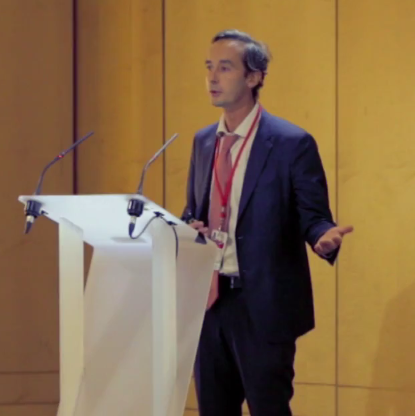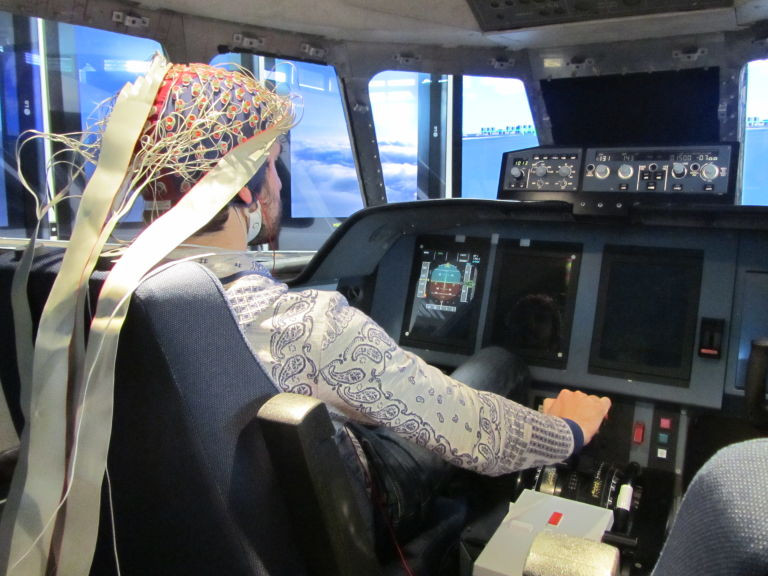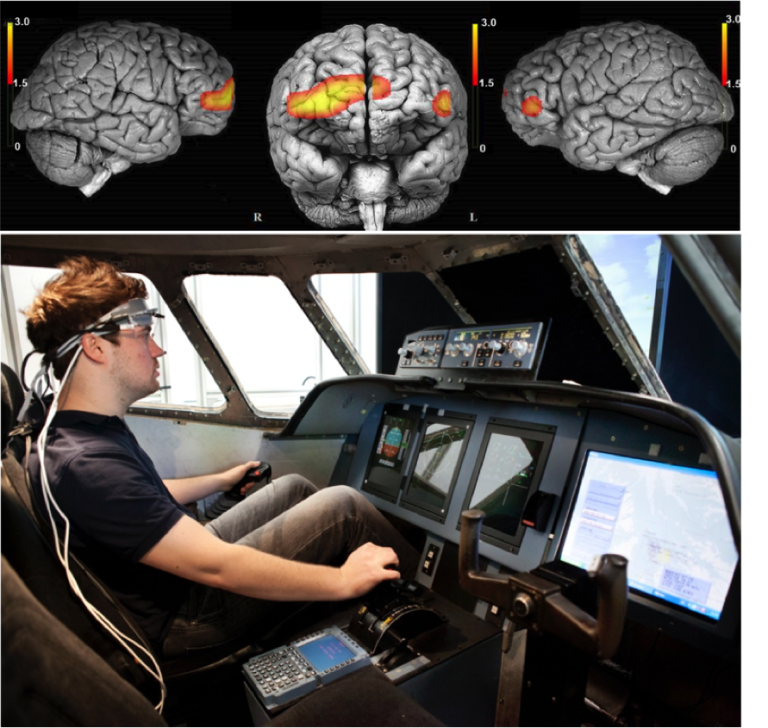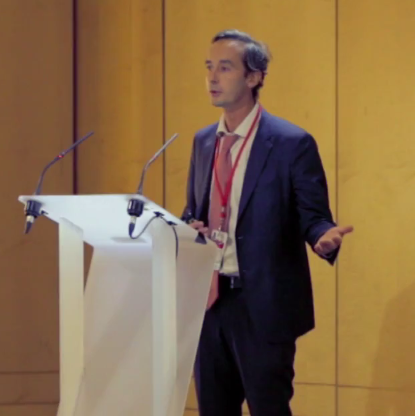Prepare for Landing: The Neuroscience of Flight Safety Pr. Frédéric Dehais

The work of Prof. Frédéric Dehais, the first Chairholder, and his team is attracting considerable interest from flight safety boards, commercial airlines, the space industry and medical fields, alike. In-Flight Brain ImagingThe researchers are developing novel, highly portable brain imaging methods for the study of the neural mechanisms underlying human error. The multidisciplinary department established by the AXA Chair at the Institut Supérieur de l'Aéronautique et de l'Espace (ISAE-SUPAERO), an engineering school in Toulouse, France, includes experts in neuroscience, signal processing, and computer science. This diversity has enabled them to use existing brain imaging techniques, and to develop the necessary algorithms to analyze—in operational situations—brain activity related to attention and to decision making. This research investigates how the two are integrated into neural mechanisms, and how their disruption may lead people working under intense stress to maintain their course of action, even when literal warning bells are going off. Their results so far indicate that the phenomenon of inattentional deafness plays a role. This is found in contexts where the brain has to prioritize where to distribute a person’s limited attentional resources. In an aviation scenario where pilots are overwhelmed, their brain may give priority to visual stimuli, to the point that they fail to hear a very loud alarm signaling trouble with their current strategy.
Prof. Dehais’s team began with experiments in the lab using the brain imaging techniques offunctional magnetic resonance imaging (fMRI) and functional near-infra red spectroscopy (fNIRS). These helped establish their protocol for the analysis of brain activity during inattentional deafness, before moving on to its use in flight simulators. For the very first time, they have now applied the method aboard an aircraft, under real flight conditions, with different types of trained pilots as their experimental subjects. Ultimately, the goal of this research is to design solutions that will act as cognitive countermeasures capable of correcting a person’s behavior when it may be leading to disaster.
A New Generation of Cockpit Design
Members of the aeronautics industry, flight safety boards, like the US National Transportation Safety Board (NTSB), and commercial airlines are following Prof. Dehais’s research closely. Recently, his team’s eye tracking experiment revealed that pilots were not monitoring their cockpits sufficiently, leading the Neuroergonomics Department to make recommendations on pilot training to the French air safety board. He is confident this work will have broad impact, quickly: the US Federal Aviation Authority, for example, has already developed legislation giving commercial airlines three years to define new training programs to enhance pilots’ ability to monitor the flight deck. On top of that, the results of this research have begun to demonstrate for aircraft manufacturers that there are explicit measures of air safety parameters, like eye-tracking studies, which will now enable a new generation of cockpit design.
Applications from Nuclear Safety to Brain Injury
The results of the AXA Chair in Neuroergonomics for Flight Safety will be used, first of all, to make aviation safer, but the research methods will also be applicable to any critical system with human operators vulnerable to uncertainty, fatigue and stress—for example, the nuclear industry.
Taking the program’s impact further, Prof. Dehais is collaborating with AXA teams on the organization of an international conference for October 2016. The event, the 1st International Neuroergonomics Conference: The Brain at Work and in Everyday Life, will gather researchers spanning many fields in basic neuroscience research. Even outer space is not beyond the scope of this line of inquiry: Prof. Dehais is also exploring applications in the space sector for the study of the brain in microgravity.
In the medical sphere, the technology developed by the neuroergonomics team is being applied to the diagnostic imaging of brain-injured patients, in contexts that previously were not possible. In some cases, such as with dysexecutive syndrome, the impairment may not be observable when the patient is lying down in an fMRI scanner. Now, thanks to the portable nature of the new devices, the brain activity of patients can be measured when they are actively moving about. The neuroergonomics team is about to start a new collaboration with a rehabilitation institute in Toulouse, France to provide the methods for taking such measurements.

A New Paradigm for Flight Safety
Prof. Dehais’s work has received significant attention from both the press and television media, allowing his lab to become a reference in the field. Stimulated initially by the efforts of the AXA Research Fund to share this research with a wider audience, both general and popular science news outlets now call spontaneously, seeking their expertise.
As the impact of his work with the AXA Chair continues to grow—leading to the development of a new master’s-level teaching module in neuroergonomics, collaborations with other high-profile academics and research opportunities with institutions like NASA—Prof. Dehais emphasizes the unique and important advantages AXA’s support offers the researcher. Compared to the length of industry contracts (6-8 months) or to most French or European grants (2-3 years), he says, the 20-year funding of the AXA Chair reflects a long-term outlook. This puts the focus squarely on the research, and allows the researcher to take some risks, Prof. Dehais says. Both the timeframe and AXA’s desire to support truly novel work are two essential ingredients in his exploration of a new paradigm in the study of flight safety.

Discover research projects related to the topic
Finance, Investment & Risk Management
Societal Challenges
Microfinance & Financial Inclusion
Emerging Market
Inequality & Poverty
Joint Research Initiative
China
2021.04.19
Understanding the Financial Lives of Low Income Households in China
Leveraging financial diaries research methodology, this joint initiative aims to provide actionable insights about the financial lives of low-income households... Read more

Xiugen
MO


